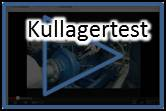Teknik
Ultrasonic Technology Overview
Ultrasonic Testing (UT), sometimes referred to as acoustic emissions (AE) testing, utilizes the properties of ultrasound for maintenance diagnostics, safety, and quality control. Industrial machines and equipment emit ultrasonic signals during operation that can aid in the detection of defects or failures at a very early stage. This information is extremely valuable in order to prevent lost production and to extend the life expectancy of critical components.
Ultrasound refers to any sound with wave propagation over 20,000 Hz (20 kHz). Because of the properties of ultrasound, the ideal range for listening to acoustic waves through air and vibration through metals occurs at 40 kHz. Ultrasonic sensors, like the CTRL UL101, receive the ultrasound at 40 kHz and convert the sound into the human range of hearing, usually below 5 kHz. The receiver and headset block competing audible noise, enabling the user to listen to specific components. Additionally, because of the characteristics of ultrasound, the signal from a specific component can also be easily differentiated from components nearby.
Ultrasound is Created By:
- Friction - bearings, gears
- Impact - valves, pumps
- Turbulence - gas leaks, vacuum leaks
- Electrical - arcing, corona discharge
The Properties of Ultrasound
There are three primary properties of ultrasound that make it ideal for diagnosing critical components. These properties allow the user to distinguish and isolate the ultrasound of individual components and leaks:
- Rate of Attenuation
- Directionality
- Ease of Shielding
Advantages of Ultrasonic Technology
Ultrasonic technology provides several advantages over other commonly used maintenance methods:
- Provides the earliest warning signs
- Instantaneous
- More accurate at pinpointing problems
- More versatile
- Non-Destructive
- Easier to learn and use
- More cost effective


